As a result of the coronavirus pandemic and the protocols the NBA and the NBPA have designed to address it, the league entered the 2020/21 season expecting to have to postpone or cancel a number of games over the course of the year.
The schedule was designed with this complication in mind. The NBA only released the first half of its schedule last fall, announcing at the time that the second half would be released at some point this winter. The goal was to make it simpler to incorporate makeup games for those first-half postponements into the late-season slate.
With the number of postponements beginning to add up, we’re creating a space to track them all. The full list of postponed 2020/21 games is below. Once the NBA announces plans to reschedule these contests, we’ll add those details to our breakdown.
This tracker will continue to be updated throughout the ’20/21 league year, and can be found anytime in the “Hoops Rumors Features” menu on the right-hand sidebar of our desktop site, or in the “Features” menu on our mobile site.
Oklahoma City Thunder at Houston Rockets
- Original date: December 23, 2020
- Reason for postponement: The Rockets didn’t have the required minimum of eight players available.
- New date: March 21, 2021
- Original date: January 10, 2021
- Reason for postponement: The Heat didn’t have the required minimum of eight players available.
- New date: May 11, 2021
New Orleans Pelicans at Dallas Mavericks
- Original date: January 11, 2021
- Reason for postponement: The Mavericks didn’t have the required minimum of eight players available.
- New date: May 12, 2021
Boston Celtics at Chicago Bulls
- Original date: January 12, 2021
- Reason for postponement: The Celtics didn’t have the required minimum of eight players available.
- New date: May 7, 2021
Orlando Magic at Boston Celtics
- Original date: January 13, 2021
- Reason for postponement: The Celtics didn’t have the required minimum of eight players available.
- New date: March 21, 2021
Utah Jazz at Washington Wizards
- Original date: January 13, 2021
- Reason for postponement: The Wizards didn’t have the required minimum of eight players available.
- New date: March 18, 2021
- Original date: January 13, 2021
- Reason for postponement: The Suns didn’t have the required minimum of eight players available.
- New date: March 30, 2021
Washington Wizards at Detroit Pistons
- Original date: January 15, 2021
- Reason for postponement: The Wizards didn’t have the required minimum of eight players available.
- New date: April 1, 2021
Golden State Warriors at Phoenix Suns
- Original date: January 15, 2021
- Reason for postponement: The Suns didn’t have the required minimum of eight players available.
- New date: March 4, 2021
Memphis Grizzlies at Minnesota Timberwolves
- Original date: January 15, 2021
- Reason for postponement: The Timberwolves didn’t have the required minimum of eight players available.
- New date: May 5, 2021
Indiana Pacers at Phoenix Suns
- Original date: January 16, 2021
- Reason for postponement: The Suns didn’t have the required minimum of eight players available.
- New date: March 13, 2021
Cleveland Cavaliers at Washington Wizards
- Original date: January 17, 2021
- Reason for postponement: The Wizards didn’t have the required minimum of eight players available.
- New date: April 25, 2021
Philadelphia 76ers at Oklahoma City Thunder
- Original date: January 17, 2021
- Reason for postponement: The Sixers didn’t have the required minimum of eight players available.
- New date: April 10, 2021
Cleveland Cavaliers at Washington Wizards
- Original date: January 18, 2021
- Reason for postponement: The Wizards didn’t have the required minimum of eight players available.
- New date: May 14, 2021
Washington Wizards at Charlotte Hornets
- Original date: January 20, 2021
- Reason for postponement: The Wizards didn’t have the required minimum of eight players available.
- New date: February 7, 2021
Memphis Grizzlies at Portland Trail Blazers
- Original date: January 20, 2021
- Reason for postponement: The Grizzlies didn’t have the required minimum of eight players available.
- New date: April 23, 2021
Washington Wizards at Milwaukee Bucks
- Original date: January 22, 2021
- Reason for postponement: The Wizards were short on players and hadn’t been able to practice for a week.
- New date: May 5, 2021
Memphis Grizzlies at Portland Trail Blazers
- Original date: January 22, 2021
- Reason for postponement: The Grizzlies were affected by contact tracing and had many unavailable players.
- New date: April 25, 2021
Sacramento Kings at Memphis Grizzlies
- Original date: January 24, 2021
- Reason for postponement: The Grizzlies were affected by contact tracing and had many unavailable players.
- New date: May 13, 2021
Sacramento Kings at Memphis Grizzlies
- Original date: January 25, 2021
- Reason for postponement: The Grizzlies were affected by contact tracing and had many unavailable players.
- New date: May 14, 2021
San Antonio Spurs at New Orleans Pelicans
- Original date: January 25, 2021
- Reason for postponement: Neither the Spurs nor the Pelicans had the required minimum of eight players available.
- New date: April 24, 2021
Chicago Bulls at Memphis Grizzlies
- Original date: January 27, 2021
- Reason for postponement: The Grizzlies were affected by contact tracing and had many unavailable players.
- New date: April 12, 2021
Detroit Pistons at Denver Nuggets
- Original date: February 1, 2021
- Reason for postponement: The Pistons didn’t have the required minimum of eight players available.
- New date: April 6, 2021
San Antonio Spurs at Detroit Pistons
- Original date: February 16, 2021
- Reason for postponement: The Spurs didn’t have the required minimum of eight players available.
- New date: March 15, 2021
San Antonio Spurs at Cleveland Cavaliers
- Original date: February 17, 2021
- Reason for postponement: The Spurs didn’t have the required minimum of eight players available.
- New date: March 19, 2021
Chicago Bulls at Charlotte Hornets
- Original date: February 17, 2021
- Reason for postponement: The Hornets were affected by contact tracing and had many unavailable players.
- New date: May 6, 2021
Detroit Pistons at Dallas Mavericks
- Original date: February 17, 2021
- Reason for postponement: A weather-related state of emergency affected the Dallas area.
- New date: April 21, 2021
Denver Nuggets at Charlotte Hornets
- Original date: February 19, 2021
- Reason for postponement: The Hornets were affected by contact tracing and had many unavailable players.
- New date: May 11, 2021
Dallas Mavericks at Houston Rockets
- Original date: February 19, 2021
- Reason for postponement: A weather-related state of emergency resulted in a government shutdown of Houston’s Toyota Center.
- New date: April 7, 2021
San Antonio Spurs at New York Knicks
- Original date: February 20, 2021
- Reason for postponement: The Spurs didn’t have the required minimum of eight players available.
- New date: May 13, 2021
Indiana Pacers at Houston Rockets
- Original date: February 20, 2021
- Reason for postponement: A weather-related state of emergency resulted in a government shutdown of Houston’s Toyota Center.
- New date: April 14, 2021
San Antonio Spurs at Indiana Pacers
- Original date: February 22, 2021
- Reason for postponement: The Spurs didn’t have the required minimum of eight players available.
- New date: April 19, 2021
Chicago Bulls at Toronto Raptors
- Original date: February 28, 2021
- Reason for postponement: The Raptors didn’t have the required minimum of eight players available.
- New date: April 8, 2021
Detroit Pistons at Toronto Raptors
- Original date: March 2, 2021
- Reason for postponement: The Raptors didn’t have the required minimum of eight players available.
- New date: March 3, 2021
Brooklyn Nets at Minnesota Timberwolves
- Original date: April 12, 2021
- Reason for postponement: Unrest in Minneapolis in the wake of a police shooting.
- New date: April 13, 2021
Note: This list doesn’t include games that were intentionally postponed well in advance for scheduling purposes, such as the Trail Blazers/Hornets game that was originally set to be played on February 7.
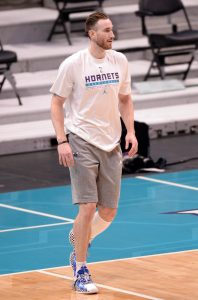 With the help of contract information from
With the help of contract information from 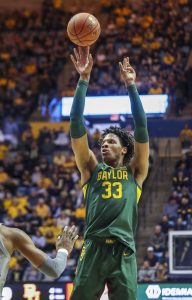
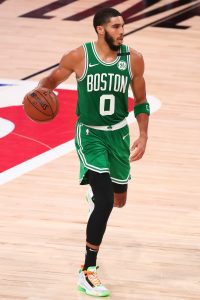
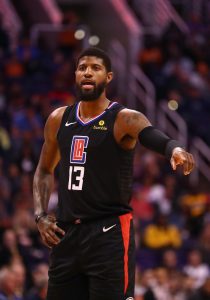 Los Angeles Clippers
Los Angeles Clippers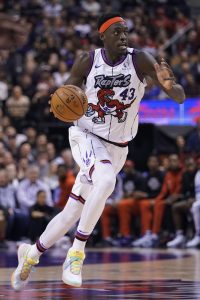 Toronto Raptors
Toronto Raptors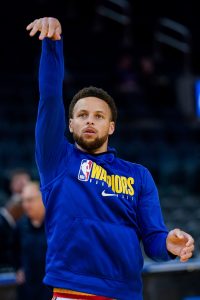 When a player signs a maximum-salary contract, he doesn’t necessarily earn the NBA max for each season of that contract — he earns the max in year one, then gets a series of identical annual raises. In Curry’s case, his 2020/21 salary actually exceeds this year’s maximum, since his deal started in the summer of 2017 and includes 8% annual raises. The annual cap increases haven’t kept up with those 8% raises.
When a player signs a maximum-salary contract, he doesn’t necessarily earn the NBA max for each season of that contract — he earns the max in year one, then gets a series of identical annual raises. In Curry’s case, his 2020/21 salary actually exceeds this year’s maximum, since his deal started in the summer of 2017 and includes 8% annual raises. The annual cap increases haven’t kept up with those 8% raises.